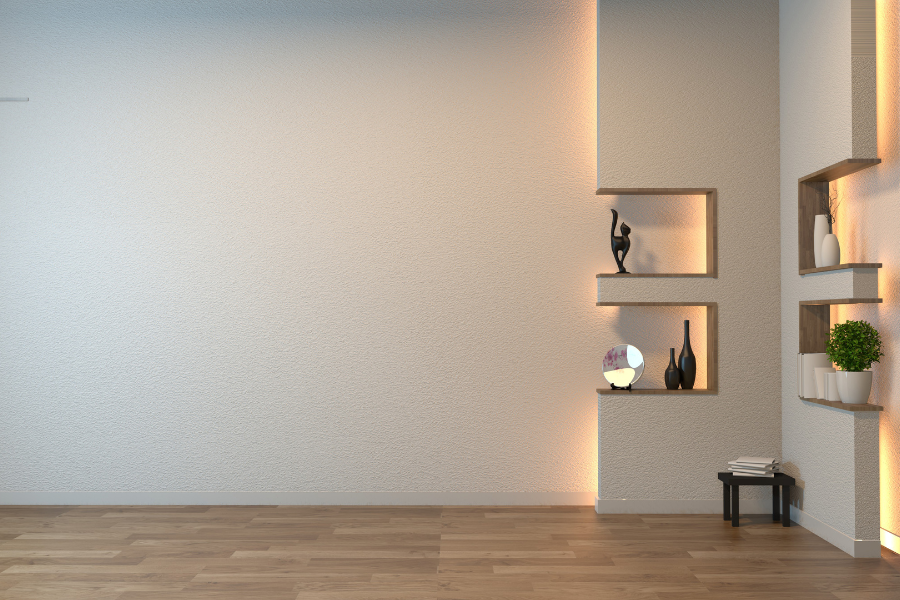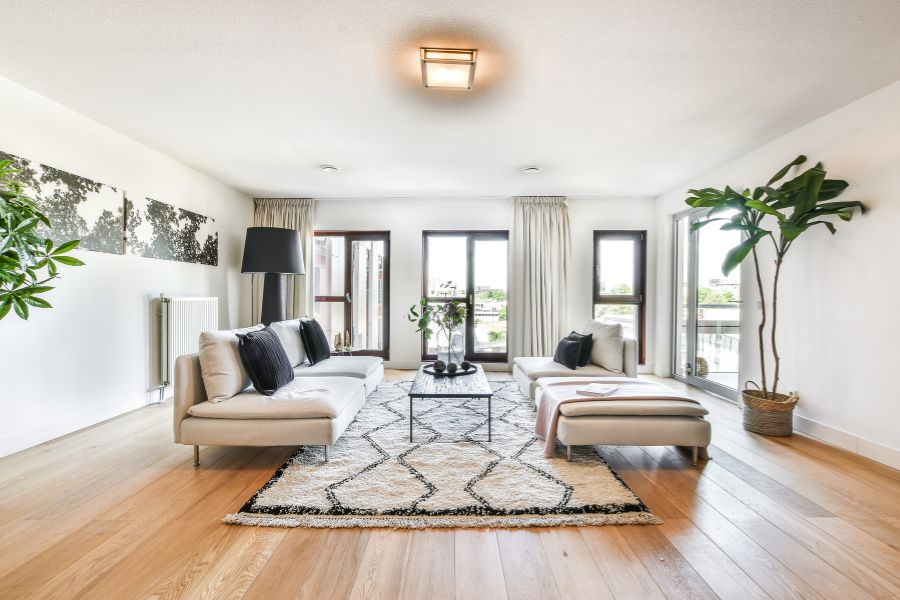The Importance of Effective Staging in Revitalizing Vacant Properties
Revitalizing vacant properties can be a challenging task for property owners and investors. These properties often lack the appeal and warmth that attract potential buyers or renters. That’s where effective staging comes in. The importance of staging cannot be overstated when it comes to breathing new life into vacant properties.
Staging is the process of arranging and decorating a property to showcase its best features and create an inviting atmosphere. It goes beyond simply placing furniture and decor in a space. Effective staging takes into consideration the target market and utilizes strategic design principles to maximize the property’s potential.
By highlighting the property’s unique features and creating a welcoming atmosphere, staging helps potential buyers or renters envision themselves living in the space. It enhances the property’s appeal and increases its desirability, ultimately leading to faster sales or rentals. So, whether it’s a vacant house, apartment, or commercial space, investing in professional staging can be a game-changer in revitalizing and maximizing the potential of vacant properties.
Understanding the Potential of Vacant Properties and How Staging Can Maximize It
Vacant properties have immense potential for revitalization and profit. These properties, whether residential or commercial, offer a blank canvas for creativity. With the right vision and execution, vacant properties can be transformed into stunning spaces that showcase their true potential.
Staging plays a crucial role in maximizing the potential of vacant properties. It involves strategically arranging furniture, decor, and other design elements to create an inviting atmosphere that resonates with potential buyers or tenants. By showcasing the property’s best features and highlighting its unique selling points, staging allows potential occupants to envision themselves living or working in the space.
Staging not only enhances the aesthetic appeal of vacant properties but also helps potential buyers or tenants connect emotionally with the space. It creates a welcoming atmosphere that evokes positive emotions and a sense of belonging. In turn, this can lead to increased interest, faster sales or rentals, and potentially higher offers or rental rates.
In conclusion, understanding the potential of vacant properties is the first step towards maximizing their value. By utilizing staging techniques effectively, real estate agents and property owners can unlock the hidden potential of these properties and attract potential buyers or tenants. With the right approach, staging can transform empty spaces into captivating environments that leave a lasting impression.

Identifying Key Areas of Improvement in Vacant Properties for Successful Staging
Identifying key areas of improvement in vacant properties is crucial for successful staging. When a property sits vacant, potential buyers often struggle to envision themselves living in the space. As a result, it becomes essential to identify the areas that need improvement and make impactful changes to enhance the property’s appeal.
One key area of improvement is the overall condition of the property. Vacant properties can quickly fall into disrepair if left unattended. Therefore, it is essential to address any maintenance issues such as broken fixtures, peeling paint, or cracked tiles. By ensuring that the property is in good condition, it not only increases its market value but also creates a positive first impression for potential buyers.
Another key area to focus on is the functionality of the space. Vacant properties may lack a clear sense of purpose, making it challenging for buyers to imagine themselves living in the property. By identifying the different rooms’ potential and staging them accordingly, it becomes easier for buyers to see how the space can be optimized to suit their lifestyle. Whether it’s transforming an empty room into a home office or staging a bare backyard to showcase its entertaining potential, the key is to utilize staging techniques that enhance the property’s functionality and make it more appealing to potential buyers.
By identifying these key areas of improvement and implementing effective staging strategies, vacant properties can be transformed into inviting spaces that captivate potential buyers. However, it’s essential to approach the task with a skilled eye for detail and a deep understanding of buyers’ preferences.
Utilizing Strategic Design Principles to Enhance the Appeal of Vacant Properties
When it comes to revitalizing vacant properties, utilizing strategic design principles can greatly enhance their appeal. Design plays a crucial role in attracting potential buyers or tenants and creating a welcoming atmosphere that highlights the property’s unique features. By carefully considering elements such as layout, lighting, color schemes, and overall aesthetics, property owners or real estate agents can significantly increase the chances of a successful sale or rental.
One key aspect of utilizing strategic design principles is to focus on creating a cohesive and visually pleasing space. This can be achieved by selecting furniture and decor that complement each other and the style of the property. The right choice of furniture and decor can help potential buyers or tenants envision themselves living in the space and make a strong emotional connection. Additionally, paying attention to small details like accessories, artwork, and textiles can add charm and personality to the property, making it even more appealing to potential clients.
Creating a Welcoming Atmosphere: The Role of Furniture and Decor in Staging
Furniture and decor play a crucial role in creating a welcoming atmosphere when staging vacant properties. Every detail, from the choice of furniture to the placement of accessories, contributes to the overall feel and appeal of a space.
The right furniture can transform a vacant property into a warm and inviting space that potential buyers can picture themselves living in. By strategically selecting furnishings that complement the style and size of the property, stagers can create a cohesive and visually appealing layout. Additionally, adding decorative elements such as artwork, plants, and accessories can further enhance the ambiance and create a sense of comfort and livability.
Well-placed furniture and thoughtfully chosen decor can also help to highlight the unique features of a property. Whether it’s a stunning fireplace, an architectural detail, or a beautiful view, staging can draw attention to these selling points and make them stand out. By creating a cohesive and visually appealing design, potential buyers will be able to envision themselves living in the space and can develop an emotional connection to the property.
In order to maximize the impact of furniture and decor in staging vacant properties, it is essential to work with professional stagers who have a keen eye for design and an understanding of the target market. By collaborating with experienced stagers, real estate agents can ensure that the furniture and decor choices align with the property’s style and appeal to potential buyers. This expertise can ultimately help to increase the chances of a quick sale and maximize the property’s value.
• The choice of furniture and placement of accessories contribute to the overall feel and appeal of a space.
• Strategic selection of furnishings that complement the style and size of the property can create a cohesive layout.
• Adding decorative elements such as artwork, plants, and accessories enhances the ambiance and creates a sense of comfort.
• Well-placed furniture and decor can highlight unique features, drawing attention to selling points in the property.
• Collaborating with professional stagers ensures that furniture and decor choices align with the property’s style and target market.
Optimizing Lighting and Color Schemes to Bring Life to Vacant Properties
When it comes to staging vacant properties, optimizing the lighting and color schemes can significantly impact the overall appeal and bring life to an otherwise empty space. The right lighting can create a warm and inviting atmosphere, while carefully chosen color schemes can enhance the visual interest and highlight the unique features of the property.
One key aspect to consider is the placement of lighting fixtures such as pendant lights, track lighting, or floor lamps. Strategically positioning these fixtures throughout the space can help create a balanced and well-lit environment. Additionally, it’s important to choose bulbs with the appropriate color temperature to create the desired ambiance. Warm white bulbs can add a cozy feel, while cool white bulbs can create a more modern and crisp look.
Color schemes play a crucial role in setting the tone and mood of a vacant property. Neutral colors like whites, grays, and beiges can provide a blank canvas and make the space feel open and bright. Introducing pops of color through accessories like artwork, throw pillows, or rugs can add personality without overwhelming the space. It’s important to keep in mind the target market and choose colors that resonate with potential buyers.
Optimizing lighting and color schemes may seem like small details, but they can make a big difference in bringing life to a vacant property. By strategically utilizing lighting fixtures and selecting appropriate color schemes, real estate agents can create a captivating atmosphere that appeals to potential buyers.
Highlighting the Unique Features of Vacant Properties through Staging Techniques
When it comes to staging vacant properties, one of the key objectives is to highlight their unique features. Each property has its own set of characteristics that make it stand out from the rest, and it’s important to emphasize these qualities during the staging process. By doing so, potential buyers can envision themselves living in the space and see the value it offers.
One effective technique for highlighting the unique features of vacant properties is through strategic placement of furniture and decor. By carefully selecting and arranging furniture pieces, stagers can draw attention to architectural details, such as a beautiful fireplace or a grand staircase. Additionally, thoughtfully chosen decor items can enhance the overall aesthetic of the property and create a sense of style and sophistication. These staging techniques not only elevate the appeal of the vacant property but also help create a welcoming atmosphere that resonates with potential buyers.
Effective Staging Techniques for Different Types of Vacant Properties
Vacant properties come in various types, each with its own unique features and potential. It is crucial for real estate agents and professional stagers to understand these differences in order to effectively stage the properties for maximum appeal. One effective staging technique for different types of vacant properties is to highlight their unique features. Whether it’s a historic home with intricate architectural details or a modern loft with sleek finishes, emphasizing these distinctive elements can help create a memorable and enticing experience for potential buyers. By strategically placing furniture and decor, utilizing appropriate lighting, and selecting complementary color schemes, stagers can enhance the property’s overall appeal and showcase its standout features.
Another key aspect of effective staging is to consider the target market for each type of vacant property. For example, a family home may benefit from staging with comfortable and inviting furniture, creating a warm and welcoming atmosphere. On the other hand, a trendy downtown apartment may require a more contemporary and minimalistic approach to appeal to young professionals. By tailoring the staging techniques to the specific target market, agents and stagers can effectively capture the attention of potential buyers and increase the chances of a successful sale.
Collaborating with Professional Stagers: How to Choose the Right Team for the Job
When it comes to collaborating with professional stagers, choosing the right team for the job is crucial. The success of staging efforts largely depends on the skills, expertise, and vision of the stagers involved. As a real estate agent, it is essential to carefully consider several factors before making a decision.
First and foremost, it is important to evaluate the stager’s portfolio and previous work. Take a look at their past projects and determine if their style and aesthetic align with the goals you have for the vacant property. Each stager has their own unique approach, so finding one whose vision matches yours is vital in creating a cohesive and impactful staging experience. Additionally, reviewing testimonials and client feedback can give you valuable insight into the stager’s professionalism, reliability, and ability to meet deadlines. By thoroughly assessing their work and reputation, you can ensure that you are selecting a team that will deliver exceptional results for your clients.
Measuring the Success of Staging Efforts: Tracking Results and Adjusting Strategies
Tracking the success of staging efforts is crucial in order to understand the effectiveness of the strategies being used and make any necessary adjustments. One way to measure success is by monitoring the number of potential buyers who show interest in a vacant property after it has been staged. This can be done by tracking the number of inquiries, requests for viewings, and offers received. By comparing these numbers to the pre-staging period, real estate agents can get a clear picture of how staging has positively impacted the property’s appeal.
Additionally, tracking the time it takes to sell a staged property compared to similar vacant properties in the market can provide valuable insights. If a staged property sells more quickly, it indicates that the staging efforts have made a significant difference in attracting buyers. On the other hand, if a staged property takes longer to sell, adjustments can be made to the staging strategy to enhance its appeal and increase the chances of a sale. Regularly evaluating and adjusting staging strategies based on these measurements is key to maximizing the success of staging efforts and ensuring the best possible outcomes for vacant properties.
Why is effective staging important in revitalizing vacant properties?
Effective staging is important in revitalizing vacant properties because it helps create a visually appealing and welcoming atmosphere, making it easier to attract potential buyers or tenants. It allows people to envision themselves living or working in the space, ultimately increasing the chances of a successful sale or lease.
How can staging maximize the potential of vacant properties?
Staging can maximize the potential of vacant properties by showcasing their best features and creating a sense of livability. By strategically arranging furniture, decor, and utilizing design principles, staging helps potential buyers or tenants see the property’s true potential, making it more desirable and increasing its market value.
What are the key areas of improvement to consider when staging vacant properties?
When staging vacant properties, it is important to identify key areas of improvement such as enhancing curb appeal, addressing any necessary repairs or updates, optimizing layout and flow, and creating a cohesive and inviting atmosphere. These improvements can greatly impact the overall success of the staging efforts.
How can strategic design principles enhance the appeal of vacant properties?
Strategic design principles, such as proper furniture placement, color coordination, and creating focal points, can greatly enhance the appeal of vacant properties. They help create a cohesive and visually appealing space that captures the attention of potential buyers or tenants, making the property more memorable and attractive.
What role does furniture and decor play in staging vacant properties?
Furniture and decor play a crucial role in staging vacant properties as they help create a sense of warmth, functionality, and livability. By carefully selecting and arranging furniture and decor items, professional stagers can transform an empty space into one that potential buyers or tenants can envision themselves living or working in.
How can lighting and color schemes help bring life to vacant properties?
Lighting and color schemes can help bring life to vacant properties by creating a welcoming and inviting atmosphere. Proper lighting techniques can highlight the property’s best features and create a sense of ambiance, while well-chosen color schemes can evoke emotions and make the space feel more vibrant and appealing.
How can staging techniques highlight the unique features of vacant properties?
Staging techniques can highlight the unique features of vacant properties by strategically emphasizing and drawing attention to them. This can be done through proper placement of furniture, using decor to accentuate architectural details, or creating focal points that showcase the property’s standout features, helping to differentiate it from others in the market.
Are there different staging techniques for different types of vacant properties?
Yes, different types of vacant properties may require different staging techniques. For example, staging a residential property may focus on creating a cozy and livable atmosphere, while staging a commercial property may prioritize showcasing functionality and versatility. The staging approach should be tailored to the target audience and the specific needs of the property.
How do you choose the right professional stagers for the job?
When choosing professional stagers, it is important to consider their experience, portfolio, and reputation. Look for stagers who have a track record of successfully staging properties similar to yours and who understand your target audience. It’s also beneficial to request references and ask for a clear outline of their staging process and pricing structure to ensure a good fit for your needs.
How can you measure the success of staging efforts and adjust strategies accordingly?
The success of staging efforts can be measured through various metrics, such as the number of inquiries, scheduled viewings, offers received, and ultimately, the final sale or lease price. By tracking these results, you can evaluate the effectiveness of the staging strategies used and make any necessary adjustments to further enhance the property’s marketability.


